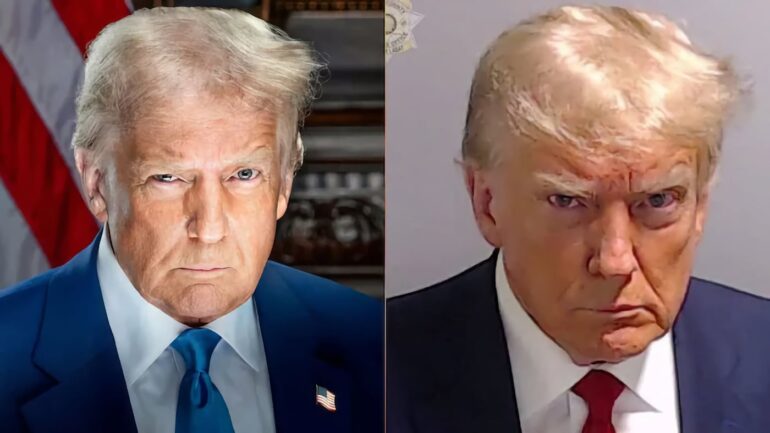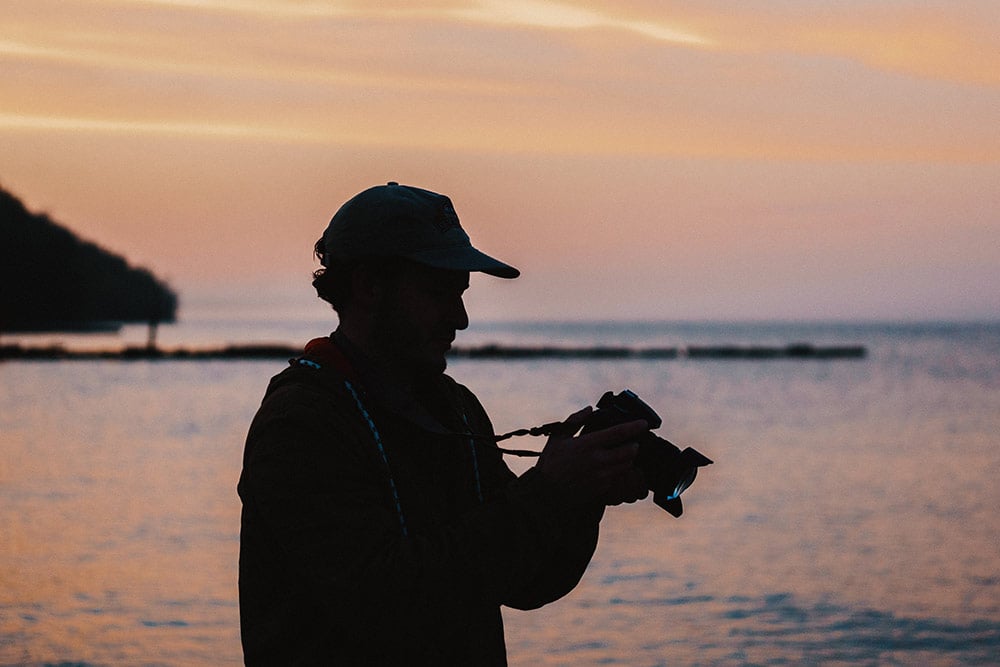Updated June 10, 2025: The White House has unveiled the new official portrait of President Donald Trump, see below.
The new official portrait of Donald Trump, created for his inauguration as the 47th President of the United States, is sparking strong controversy. Both its aesthetics and the implicit messages it conveys are drawing attention from photography enthusiasts and political analysts alike.
Sommaire
Dramatic and Theatrical Lighting
One of the most notable aspects of this portrait is the dramatic lighting. Using a light placed below eye level, the official photographer, Daniel Torok, gave the image a dark and theatrical look, with pronounced shadows.

The photo was taken with a Nikon Z 9 and a Nikkor Z 85 mm f/1.2 S. It was lit using Profoto lighting equipment: a D30 for the frontal light, two B10X positioned above the shoulders and below eye level, and an A2 flash for hair lighting, with softboxes and grids. Extensive retouching was done to achieve the final image.
According to several professional photographers, this lighting technique is unusual for an official presidential portrait. “The deliberate choice of under-lighting was meant to draw attention to the subject’s eyes, creating a dramatic and intentional effect,” analyzes Jared Polin in his review. In fact, the photographer himself said he had never done a studio portrait using such lighting. Surprising.
By comparison, Trump’s former official portrait from 2017 featured more neutral, conventional lighting, offering a more approachable image. This radical shift may reflect a communication strategy aimed at projecting an image of strength.




A Stern Expression, Far from Convention
Trump’s face in this portrait shows a serious expression, with furrowed brows and a piercing gaze. Shealah Craighead, former official White House photographer, noted that this pose is one of Trump’s favorites, as he considers smiling a sign of weakness. “He always aims to project an image of power, and this pose illustrates that perfectly,” she told the New York Times.


Adding to this is a striking similarity to his famous 2023 mugshot taken in Georgia during his legal troubles. This visual association could be interpreted as a deliberate message of defiance in the face of adversity. Indeed, Daniel Torok, who took the official portrait, confirmed it was strongly inspired by Trump’s mugshot, “one of the most searched photos online since 2023.”
Timothy O’Brien, Trump’s biographer, describes this evolution as a mix between Clint Eastwood’s squint and a reminder of his mugshot. In this sense, the portrait stands out radically from traditional American presidential portraits, which generally present a warm and accessible image of the head of state.


One photographer also noted that the lighting recalls the “End Times” series by Jill Greenberg, known for her provocative portraits of crying children.
A Deliberate Political Choice
Beyond the purely aesthetic aspects, this portrait reflects a clear political strategy. Pete Souza, former Chief White House Photographer under Obama, points out that official portraits often reflect not only the president’s character but also the mood of the nation. “This portrait is more than just a photo; it is a statement on how Trump sees himself and wants to be seen by the nation,” he explained to the New York Times.
By departing from the conventions of presidential portraits, this visual choice reinforces the image of a combative Trump, breaking away from traditional norms. For his supporters, the image embodies the determination and strength needed to lead the country. For his critics, it evokes an authoritarian, even intimidating leader.
Donald Trump’s official portrait is far from a mere formal exercise — it is a true communication strike. Through its dramatic lighting, stern expression, and implicit references to key events, it polarizes as much as it fascinates. Whether one appreciates the aesthetics or not, it marks a distinct milestone in the history of American presidential portraits.
Update June 10, 2025: The White House has unveiled a new official portrait of Donald Trump
The portrait, taken by official photographer Daniel Torok, shows Trump in a dark blue suit, light shirt, and his signature red tie, seated in front of a neutral black background—an unusual choice as the American flag is absent from the backdrop.


The lighting is more natural than in the January portrait (never intended to be permanent), yet remains highly contrasted and cinematic: a large soft light source from above is complemented by a side glow.
This play of light and shadow emphasizes a visual duality, with one side of the face half in shadow – an effect often used in dramatic portraits, reminiscent of Karsh or the iconic Churchill photo by Yousuf Karsh.
Technically, the shot is very close-up, framed at shoulder height, with a gentle blur around the shirt and tie edges, but sharp focus on the face and hairstyle. The high contrast, pronounced shadows on one side, warm lighting, and symmetrical composition echo the aesthetic of the inauguration portrait, while softening Trump’s expression compared to the January version.
Symbolically, the absence of the flag suggests a shift toward a more declarative image: Trump is no longer simply the leader of the United States, but the “star” himself, embodying a more personal and combative stance. This portrait dramatizes a return to embodied power, evoking a sense of strength and individualist posture rather than institutional solemnity.


